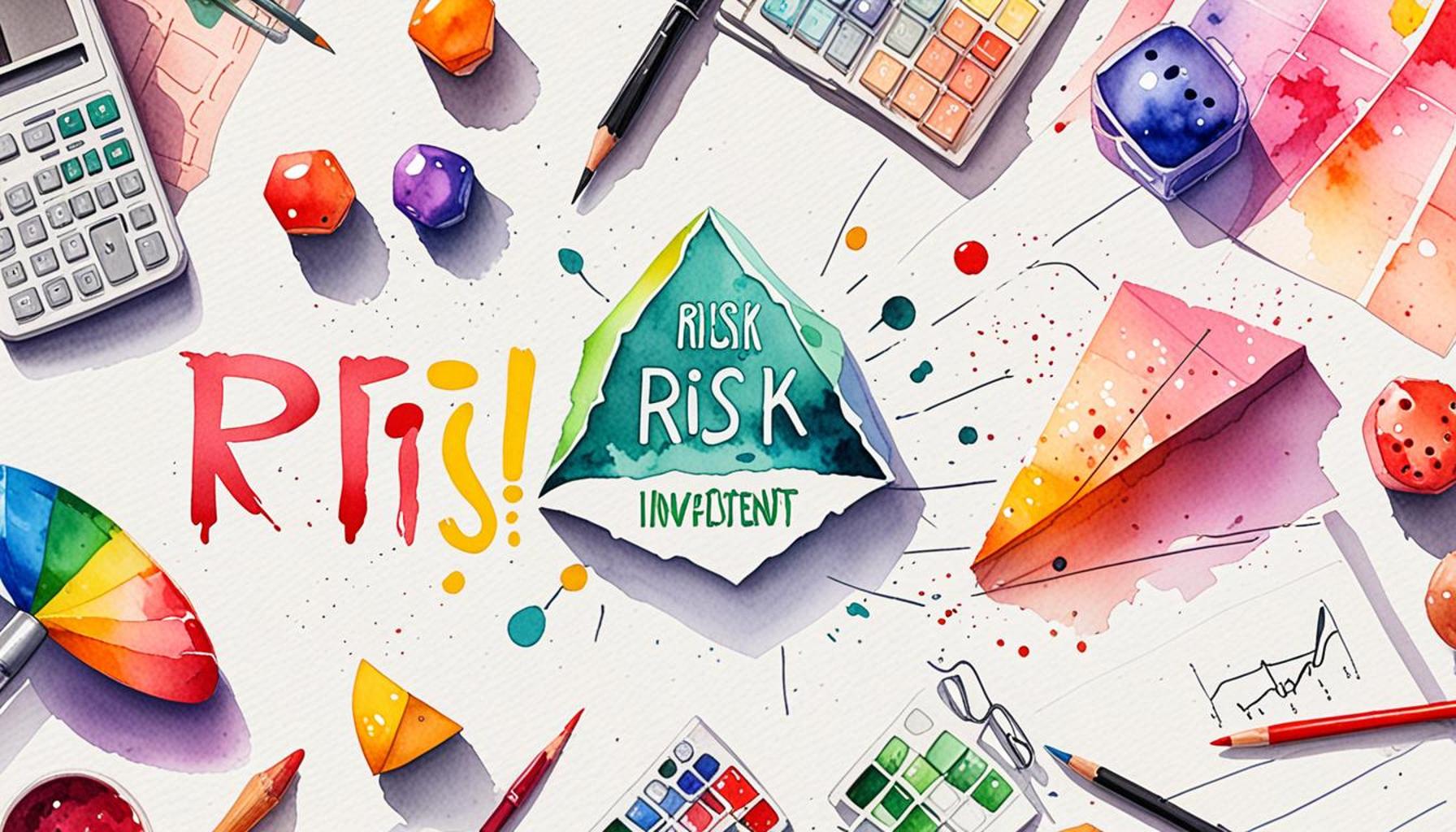Risk Mitigation Strategies in Investments: What Investors Need to Know

The Importance of Risk Management in Investing
Every investment carries a certain level of risk. Understanding this intrinsic aspect of investing is crucial for success. Mitigating risk is not just a strategy; it’s a pathway to financial stability and peace of mind. The world of investing is often likened to navigating a vast ocean. Without proper tools and knowledge, you may find yourself adrift in turbulent waters. However, with the right strategies, you can steer your ship with confidence toward your financial goals.
To embark on a journey of informed investing, consider the following key strategies:
- Diversification: This principle involves spreading your investments across various asset classes, such as stocks, bonds, real estate, and commodities. For example, if you invest solely in technology stocks, any downturn in that sector could lead to significant losses. By diversifying, you reduce the impact of underperformance in any single area, thereby stabilizing your overall portfolio.
- Asset Allocation: Your investment portfolio should reflect your personal risk tolerance, time horizon, and financial goals. For instance, a younger investor with a long-term outlook may allocate a higher percentage of their portfolio to stocks for growth, while someone nearing retirement might prefer a balanced approach with more bonds to ensure stability. This tailored asset allocation often requires regular review and adjustment to stay aligned with changing market conditions and personal circumstances.
- Continuous Education: The financial landscape is always evolving. Staying informed about market trends, economic indicators, and global events can empower you to make informed decisions. Subscribing to reputable financial news sources, attending investment seminars, and even joining local or online investment groups can provide valuable insights and help refine your strategy.
Implementing these strategies can help shield your portfolio from unexpected downturns. If you invest responsibly and make educated decisions, you’ll not only safeguard your finances but also enable yourself to seize opportunities when they arise. For instance, during market dips, having a diversified and well-allocated portfolio allows you to buy quality assets at discounted prices—an action that could yield significant returns in the future.
As you listen to expert advice and review real-time data, remember—the goal is not to eliminate risk entirely but to manage it wisely. This perspective shifts the focus from fear of loss to a proactive approach to growth. You’ll cultivate an investing mindset that thrives, no matter what the market conditions may be. By embracing informed risk management, you lay the groundwork for not only achieving your financial aspirations but also building a legacy for future generations.
DISCOVER MORE: Click here to learn about digital opportunities
Effective Strategies for Reducing Investment Risk
In an ever-changing market landscape, having a solid foundation of risk mitigation strategies can be the difference between financial success and overwhelming losses. To navigate these choppy waters, investors need to adopt a well-rounded approach that not only emphasizes potential gains but also addresses and minimizes potential losses. By focusing on core strategies, investors can build resilience and ensure their portfolios are not only prepared for growth but for unforeseen challenges as well.
One of the cornerstones of effective risk management in investments is understanding the different types of risks associated with various asset classes. Here are a few key types of risks to be aware of:
- Market Risk: This involves the potential losses resulting from changes in overall market conditions. Fluctuations in stock prices, interest rates, or commodity prices can significantly affect your investments.
- Credit Risk: This refers to the possibility that a bond issuer may default on its obligation to pay interest or principal. In the case of equities, it can involve a company underperforming or facing bankruptcy.
- Liquidity Risk: Investors should be cautious of how easily they can buy or sell their assets without affecting the asset’s price. High liquidity means you can convert your asset to cash quickly, but low liquidity can lead to challenges in executing trades.
Understanding these risks is the first step, but effectively managing them is what sets prudent investors apart. One powerful method for mitigating risk is through setting realistic expectations. Acknowledging that there is no sure outcome in investing can help develop a mindset that embraces both the highs and lows of the market. Investors should define their objectives clearly and create a plan that aligns with their risk tolerance and time horizon.
Moreover, utilizing tools like stop-loss orders can also serve as protective measures. A stop-loss order allows investors to set a predefined price at which to sell an asset to prevent further losses. This automated technique serves to limit potential dips in asset values, providing an additional layer of security during volatile periods.
Lastly, conducting regular portfolio reviews is essential. The financial market never sleeps, and external events such as geopolitical developments or economic changes can impact your investments’ performance. By scheduling routine evaluations of your portfolio, you can maintain alignment with your initial goals and adjust your strategies as necessary. This proactive approach enables investors to make informed decisions based on current market conditions, enhancing their chances of long-term success.
Incorporating these strategies into your investing philosophy empowers you to manage risk effectively. It nurtures the resilience needed to weather market storms while providing a stable footing for future growth. When you approach investing through the lens of risk mitigation, you position yourself not just to react to challenges—but to thrive in the face of them.
DISCOVER MORE: Click here to dive deeper
Embracing Diversification and Asset Allocation
One of the most powerful strategies in mitigating risk is diversification. This principle is rooted in the age-old adage of not putting all your eggs in one basket. By spreading investments across a wide range of asset classes—such as stocks, bonds, real estate, and commodities—investors can reduce the impact of a poor-performing asset on their overall portfolio. For example, if a particular sector of the stock market faces a downturn, having investments in bonds or real estate can provide a cushion, stabilizing overall financial performance.
Furthermore, understanding the role of asset allocation in diversification is crucial. Asset allocation refers to dividing your investment portfolio among different asset categories. Depending on your financial goals, risk tolerance, and investment timeline, a mix of equities, fixed income, and alternative investments can optimize returns while managing risk. Research indicates that an appropriate asset allocation can account for a significant proportion of a portfolio’s long-term performance, emphasizing its importance in risk management strategies.
Another effective risk mitigation tactic is maintaining a proper investment horizon. The timeline for your investments can influence not only the types of assets you choose to hold but also your ability to ride out market fluctuations. For example, if you’re investing for a goal ten years down the line, you can afford to take on more short-term volatility in pursuit of greater long-term returns. Conversely, if your investment timeline is shorter, a more conservative approach may be necessary to protect your capital from unexpected market swings.
Consider also the opportunity to embrace hedging strategies to manage risk. These strategies, which include options and futures contracts, can offer protection against adverse price movements without sacrificing potential upside. For example, purchasing put options can provide an insurance policy against declines in stock prices, allowing you to preserve capital while still benefiting from upward trends in the market. Such tactics can seem complex, but they can be invaluable tools in the hands of a vigilant investor.
Investment investors should make use of educational resources, which are widely available and can significantly enhance one’s investment knowledge. Books, online courses, webinars, and consultation with financial advisors can provide insights into effective strategies for risk mitigation. In the United States, organizations such as the Financial Industry Regulatory Authority (FINRA) offer numerous educational tools for investors looking to enhance their understanding of risks and strategies. Empowering oneself with this knowledge fosters confidence and encourages informed decision-making in the face of potential challenges.
Finally, don’t underestimate the power of emotional discipline when investing. In moments of market volatility, fear and greed can cloud judgment, leading to rash decisions that deviate from one’s long-term strategy. Developing a disciplined approach, perhaps through regular practice of mindfulness or guided methods such as journaling, can help keep emotions in check, allowing for more rational decision-making. By cultivating this emotional fortitude, investors can remain focused on their goals and allow their strategies to unfold naturally over time.
Utilizing these diverse methods for risk mitigation provides a well-rounded approach that encourages resilience and adaptability in an ever-evolving financial marketplace. As you embark on your investment journey, remember that your strategies should evolve—as you do—ensuring that you remain aligned with your overarching financial aspirations.
DISCOVER MORE: Click here to find out how a growth mindset can enhance wealth creation
Conclusion
In the complex landscape of investing, understanding and implementing risk mitigation strategies is paramount for ensuring long-term financial success. As we explored, diversification and asset allocation stand as foundational principles that can buffer an investor against unexpected market shifts, emphasizing the importance of spreading investments across various asset classes. Equally critical is grasping your investment horizon, which allows you to resist the urge to react impulsively to market fluctuations and stay committed to your strategic objectives.
Employing hedging strategies can further enhance your ability to navigate volatility, while prioritizing emotional discipline ensures that fear and greed do not dictate your financial decisions. By continuously educating yourself and leveraging available resources, you empower your investment decisions with knowledge and foresight. Seek out opportunities to expand your understanding, whether through engaging with financial advisors or utilizing online educational platforms.
Ultimately, the journey of investing is not just about achieving financial goals but also about fostering resilience and adaptability. As you embrace these risk mitigation strategies, remember that your investment approaches should evolve alongside your personal growth and changing market conditions. Stay informed, act purposefully, and remain steadfast in your commitment to sound financial practices. By doing so, you will not only safeguard your investments but also pave the way for enduring wealth and stability in an ever-changing economic world.



